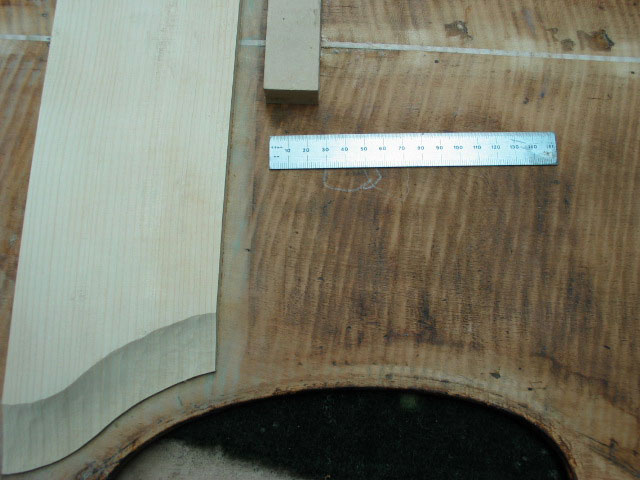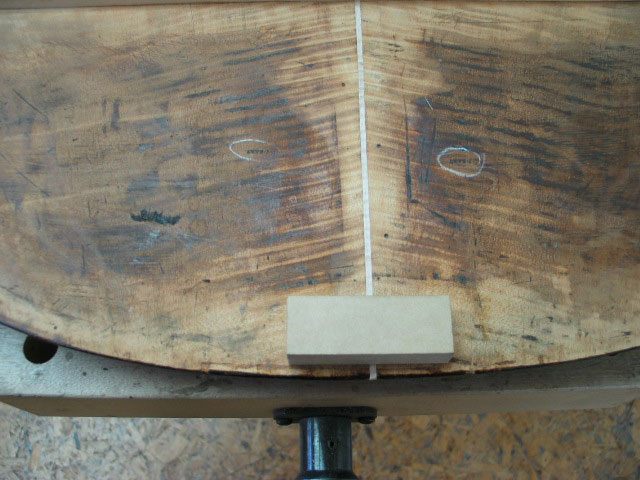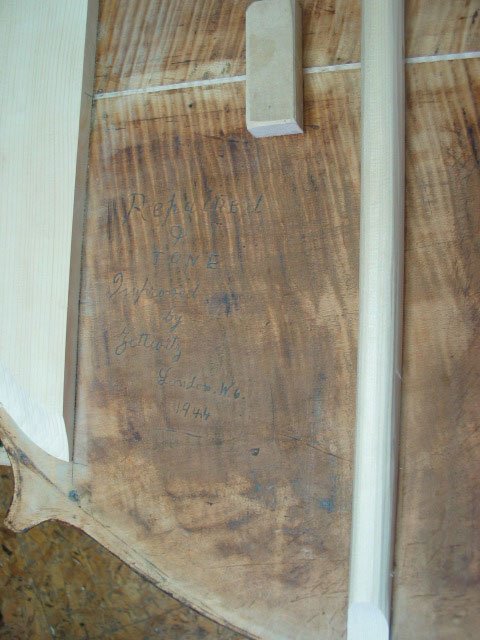
 |
|
|
|
#1
|
|||
|
|||
|
I have decided to take on my 'bass in a bag project' and repair this old instrument that I found in severely bad shape.
Its taken me a while to take the back off . It was epoxied to ribs with a thick barrier of the stuff all round.At times I had doubts that I would manage without causing damage but finally its off and almost cleaned of Gorilla glue and epoxy. The bass has a typical old French brace made of a piece good looking spruce. The upper brace I got off and can use again with a little shaping and the lower bout brace will be replaced. My question is should I replace the large brace or not ? This would be a consideration for tonal purposes if it applies. The brace is glued on with hide glue and has stayed original by the looks of it. It would make great wood for the repairs that the top will be needing. Any advice / insight would be great .... |
|
#2
|
|||
|
|||
|
In the interim I have decided that it would be the correct thing to just keep the brace as the maker had envisioned . Its French after all .
|
|
#3
|
||||
|
||||
|
Quote:
Maybe better and full shot pics might help. You can see all of the bass but we can only see the parts that you show us. |
|
#4
|
||||
|
||||
|
IMO it is just a brace, and changing it would most likely be an improvement. Since it has to come out to repair the seam, you might as well update.
|
|
#5
|
|||
|
|||
|
Here are a couple of pics. The centre join had a piece of epoxied wood in it up to the big brace as can be seen in the pics. The back sits perfectly on the ribs now after I took it off (before it was being pulled in all directions from the epoxy).
Now what route to take.... full center seam inlay ??? Due to massive peer pressure I will replace the back brace . Any advice on how many braces the bass will need , Im guessing 3 or will sturdy patches along the centre seam be an option ...? |
|
#6
|
||||
|
||||
|
Quote:
The Center joint may need to be re-jointed and then, a strip placed in there to fill the gap. Also, how is the overhang of the Top on the bottom bouts over the Ribs? Overlaps or more flush like? If Flush, cut the ribs at the block and tuck them in slightly shorter. The lower corner blocks may need trimming under the Ribs as over time, the string pressure pulls the lower block forward bending the back at the bottom under that wide stair-step brace as well as twisting the corner blocks inwards. This is a common fault with old French basses and correction is not easy. The bass needs to be modified. Just like with blockless basses, if made with corner-cutting, money-saving techniques, it needs expensive corrections in restoration. Just guessing here what you may need.  |
|
#7
|
|||
|
|||
|
Quote:
Now thats interesting info ( the peer pressure is now at boiling point  ) .... ) ....When I sit the ribs on the back , the fit is good with approx 3-5mm overlap all round . Surprisingly with all the non original glues , cleats etc the bass seems to have regained its shape to a large extent . I will remove the middle bar and use it for the top repairs , there is a lot of wood to be had from it. Ken when you talk about cutting the ribs at the 'block' to get a good plate fit are you talking about the end block ? |
|
#8
|
|||
|
|||
|
Quote:
|
|
#9
|
||||
|
||||
|
Quote:
   As you can see, the blocks were left in till after the crossbars were glued in and taken out only when.. Arnold? (you tell him..  ) ) |
 |
| Currently Active Users Viewing This Thread: 1 (0 members and 1 guests) | |
|
|